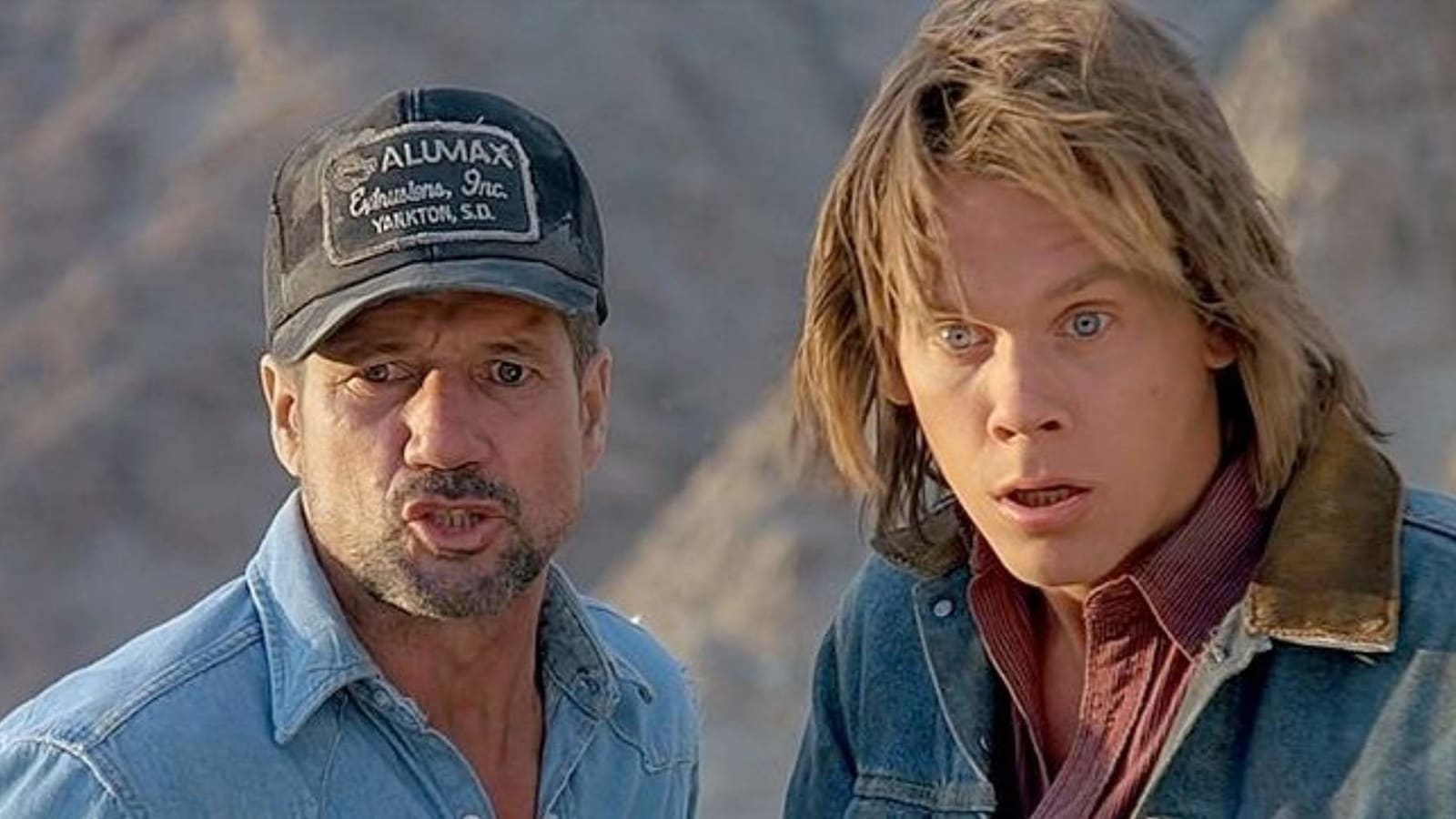
On the perfection that is "Tremors"
Hollywood has traditionally treated the month of January as a cinematic landfill, so when Universal unloaded “Tremors” in the first month of 1990, there was little reason to expect it would be anything more than a shoddily made monster programmer on the level of the previous January’s "DeepStar Six."
Its director, Ron Underwood, was making his feature filmmaking debut, while its writers, Brent Maddock and S.S. Wilson, had just cheapened their immensely enjoyable “Short Circuit” by writing the uninspired screenplay for “Short Circuit 2." Its stars, Kevin Bacon and Fred Ward, were well-liked B-list actors, but no one rushed out to see their latest films. The studio concocted an ad campaign that depicted the movie’s monster burrowing up through the earth toward unsuspecting victims like a subterranean "Jaws." It felt like a case of been there, done that, why this?
“Tremors” only grossed $16 million on an $11 million budget. But if you were lucky enough to see the film during its brief theatrical run, you knew it was something special.
I saw it at the Bowling Green, Ohio, Woodland Mall Cinema on opening night and hung on every meticulously structured twist and turn like it was my first viewing of "Back to the Future" or "Robocop." It felt perfect. It is perfect. There’s a reason it spawned five direct-to-video sequels and a television series.
Once you watch "Tremors," you are a Tremors" fan for life.
What sets it apart from your typical monster movie? Let’s start with our two heroes, Val (Bacon) and Earl (Ward), homeless handymen living out of their pickup truck in a sparsely populated former mining town called Perfection, Nevada. In the first 10 minutes, the script deftly communicates that these are goofy yet capable men. They quarrel over who made breakfast the previous morning, hatch doomed strategies that might finally break them free of Perfection’s dead-end grasp and solve every dispute over rock-paper-scissors. They’re everymen who know what they know but defer to experts when they’re out of their depth.
One such expert is Rhonda (Finn Carter), a geologist who’s monitoring the area’s unusual seismic activity. Though she fails at first sight to live up to Val’s impossibly high standards for a potential love interest (“long blonde hair, big green eyes, world-class breasts, ass that won’t quit and legs that go all the way up”), her expertise and resourcefulness make her part of the team. There’s a great moment where she launches into what feels like it’s going to be a momentum-killing monologue about how many creatures (later christened “graboids”) are prowling the area, and Val cuts her off. He’s heard enough, and he trusts her. Now how do they clear the next obstacle in their path?
Doomsday preppers were not a well-known quantity in 1990, so the inclusion of married survivalists Burt (Michael Gross) and Heather (Reba McEntire in her big-screen debut) gave the film a quirky charge — doubly so because Gross was playing the arch-conservative opposite of the ex-hippie dad he played on “Family Ties." But while there’s talk of “eminent domain” and government incursion into their isolated, apocalypse-impervious paradise, we value Burt and Heather for their gung-ho resolve. When a graboid bursts through their brick basement, they unleash ballistic hell on the wormy invader with a steadily mounting assault that ends with Burt tearing an elephant gun off the wall and blasting the graboid to kingdom come. His triumphant yowl — “Broke into the wrong goddamn rec room, didn’t ya, you bastard!” — elicited cheers from the audience.
And why is that?
It’s simple. Maddock and Wilson skillfully combine exposition with character development. We learn everything we need to know about the townspeople — e.g. Chang’s opportunism, Miguel’s selflessness, Mindy’s pogo obsession, Melvin’s brattiness — over the course of a few lines of dialogue, all of which moves the story forward. It’s a town where everyone knows each other, and, because they’ve no choice, tolerates each other. Occasionally, one of these characters gets gobbled up by the graboids (who stalk strictly by sound), and while we’re having a high time watching the movie, we feel the loss. They’re all decent enough people. No one has it coming.
The cat-and-mouse game with the graboids is the film’s most exquisite pleasure. There’s a sense that they’re insensate predators, but they’re much more clever than the characters initially realize. Underwood inventively films the graboids’ pursuit via the upending of fence posts, floorboards and foundations. When they surface, their toothy, mouth-borne tentacles try to drag their prey underground. The creature design by Tom Woodruff and Alec Gillis takes some cues from Carlo Rambaldi’s "Dune" sandworms, but the graboids possess a prehistoric savagery that renders them more terrifying than exotic. No one is going to tame these beasts who just want to burrow and eat.
“Tremors” is a tightly structured B-movie that uses every last part of the buffalo. At 95 minutes, there’s not an extraneous scene. It’s a fun movie. It’s a funny movie. It’s not at all interested in building a universe. Buy a ticket, have a blast and go home satisfied. It’s everything a movie should be.
More must-reads:
Trending in Entertainment
Customize Your Newsletter
 +
+
Get the latest news and rumors, customized to your favorite sports and teams. Emailed daily. Always free!

